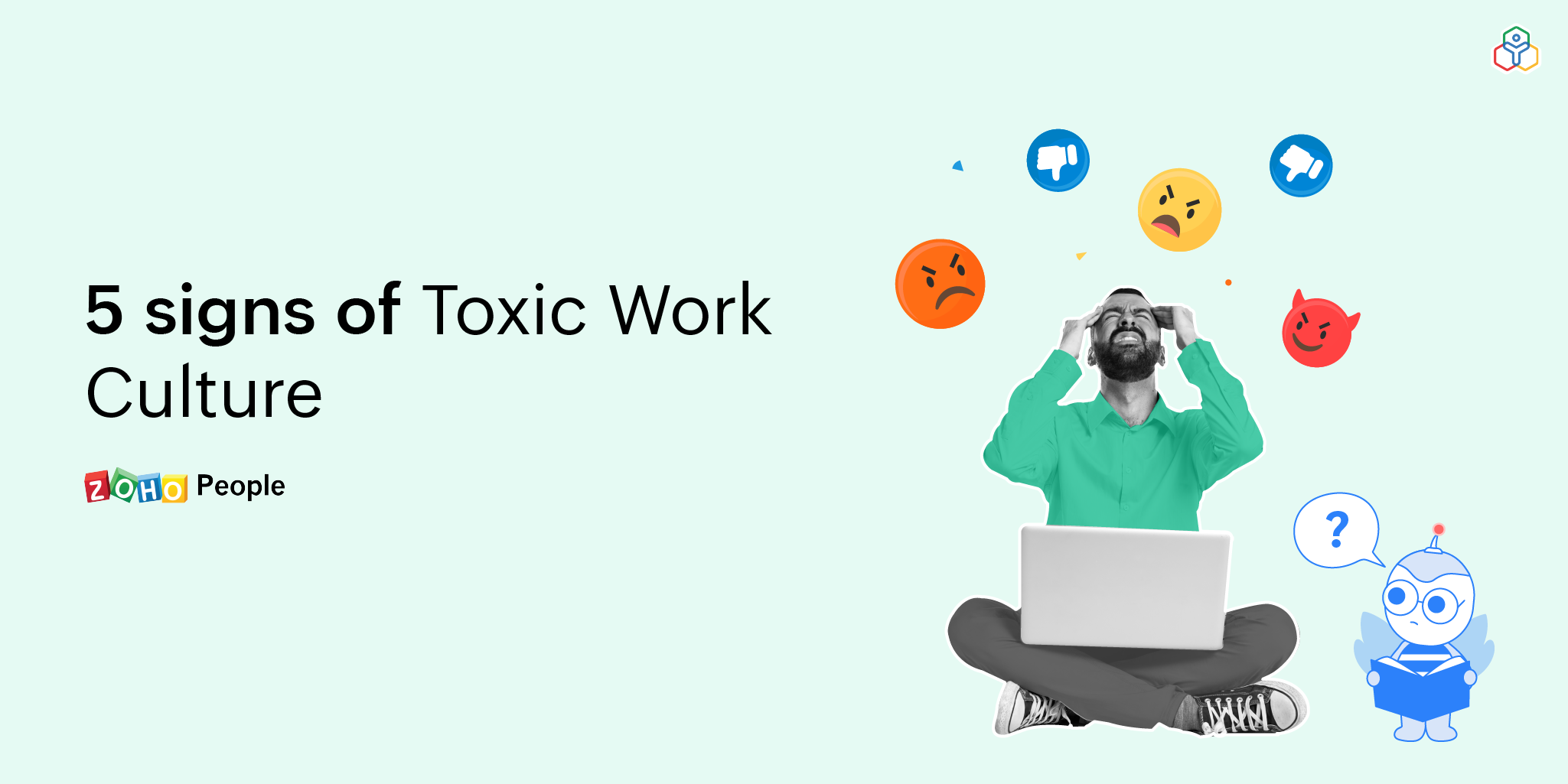- HOME
- Performance and Culture
- 5 signs that your organizational culture needs improvement
5 signs that your organizational culture needs improvement
- Last Updated : August 23, 2023
- 2.0K Views
- 4 Min Read

Company cultureis everything to an organization. The success of your products and services is tied directly to how candidates, employees, partners, and customers perceive your business, and work culture plays a huge role in that. Establishing a healthy work culture can help your organization align its core values with its workplace practices, attract and retain top talent, and turn employees and customers into brand advocates. A toxic work culture, on the other hand, will suck out all the motivation from your employees, affecting the way they interact with their peers, report to their managers, address projects and problems, and serve your customers. A 2019 survey from SHRM has stated that turnover due to workplace culture has cost organizations close to $223 billion in the last five years. If you aren't sure whether your work culture is suffering behind the scenes, here are five tell-tale signs that change is needed:
Demotivated employees
Without a healthy work environment, there's not much that can motivate employees to unlock their full potential and give their best each day. They may not know what they are working toward or how their work contributes to the organization's greater cause because your core organizational values are not well-defined or exemplified in the everyday work employees are asked to do. Employees may also feel stifled, unable to provide their input or bring new ideas to the table because they would be micromanaged to work in a way that top leaders think is right. This leads to a gloomy work environment with almost no uplifting or casual interaction between peers because they are all too stressed and demoralized. Unscheduled absenteeism rates may peak at an all-time high during times like this, so be sure to check your attendance reports. Check out our infographic to read more tips on how to motivate employees.
Poor communication
Honest, compassionate, and transparent communication must flow uninterrupted in your organization in order to foster a positive work culture. In fact, how communication is currently flowing is usually enough to assess the current state of your organizational culture. In a toxic work culture, there will be no two-way communication. Top-level management will pass on announcements that they think employees should be informed of without any feedback. They may not be very transparent about the business's current conditions or upcoming plans, and employees will often not be involved in the decision-making process at the company. If feedback exchanges seem like a rare sight amongst your teams and managers really only talk to their team members when something goes wrong, it's a red flag. Here's an infographic on how to improve internal communication.
Rigid rules
A decade or two ago, having strict rules and policies may have been the right thing to do. But these days, this approach is not likely to accommodate your employees' needs or requests in the best possible way, and that contributes to a toxic work culture. For instance, managers may tend to reject employee time off requests unless they are for a pressing reason. Another example would be if a majority of employees are asking for a particular benefit scheme, but top leaders disapprove and introduce benefits that they think are good instead. At a time when employees are looking to work for organizations that are flexible with their approach and support both work-life balance and their overall well-being, continuing with rigid policies will make your organization a less favorable place to work. Here's how you can adopt a flexible work culture that puts employees first.
Negativity between coworkers and teams
Poor communication and a lack of healthy peer relationships will lead to a negative work environment that is filled with gossip, rumors, and bullying. Middle-level managers, who may know about these situations going on behind the scenes, can often turn a blind eye in an attempt to keep focused on work and make their targets. Unfortunately, the problems then grow out of hand. Another scenario might be that employees themselves trapped in circles of disagreement with their peers and fail to work as a team and support each other. If your workforce is complaining about the lack of opportunities or even your best performers are demotivated and producing lower quality work than normal, it's time to get feedback, identify the causes of internal strife, and address them thoroughly. Check out our blog on how to prevent negativity at the workplace.
Increased turnover
This is one of the most obvious signs of a toxic work culture that has been allowed to persist for far too long. High-performing employees may keep leaving your organization because the unhealthy work environment is slowing down their career growth, or they know they can find jobs elsewhere that will not have the same pervasive negativity. Most employees don't want to work for organizations that don't accommodate their requests, keep important developments hidden from employees, don't value their feedback, and dismiss recognition. Then, as turnover increases, your organization will find itself constantly hiring and training replacements, which is extremely time-consuming, resource-intensive, and damaging to your organizational growth. Check out our infographic for eight nifty tips to reduce employee turnover.
Final thoughts
As an HR professional, it's your duty to turn a toxic work culture into a healthy work environment that nurtures your workforce and supports your organization. While trying to implement strategies to transform your culture, it's important to garner top management's support and help them adapt their leadership practices accordingly. That way, the rest of the organization will be more likely to take the initiatives seriously, and you'll get to see the true results of your efforts. Don't mistake lack of executive support for a definitive sign that a strategy is a bad one; ask employees how they think improvements could be made, gather feedback from managers and team leads, and then present your case. You may find that just going through these initial steps sets your organization on a course toward a more engaging, compassionate, and productive culture because employees will see that their input is valued.
 Tarika
TarikaContent Specialist at Zoho People


